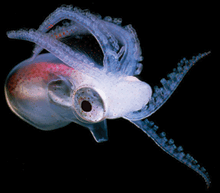 The budding and fission yeasts provide for several interesting comparisons. Some of these somewhat illustrate my considerable confusion about the “evolution of sex”. Here’s one:
The budding and fission yeasts provide for several interesting comparisons. Some of these somewhat illustrate my considerable confusion about the “evolution of sex”. Here’s one:While Saccharomyces cerevisiae (the budding yeast) prefers to spend time as a diploid in the G1 phase of the cell cycle (with two unreplicated genomes), Schizosaccharomyces pombe (the fission yeast) prefers being a G2 haploid (with one replicated genome). These “preferences” are inferred from two pieces of evidence from each of the yeasts:
(1) Budding yeast cells mate under rich conditions (become diploid), and sporulate under
 starvation (become haploid). Fission yeast cells remain haploids in rich conditions, while mating and immediately sporulating under starvation (zygotic meiosis).
starvation (become haploid). Fission yeast cells remain haploids in rich conditions, while mating and immediately sporulating under starvation (zygotic meiosis).(2) In cycling cells, budding yeast spends most of the cycle in G1. S-phase and mitosis are separated by only a short G2. By contrast, fission yeast cells reside in G2 most of the time, with only a short gap between mitosis and S-phase.
The interesting thing here is that, while the two yeasts prefer to maintain different ploidy levels (2N versus 1N), they both prefer to have two copies of the genome present (2C). Why might this be?
One suggestion is that this means that there will always be a template for recombination in the event of a DNA double-stranded break (DSB). DSBs are a particularly challenging form of DNA damage for cells. They must paste back the correct broken ends, which requires an intact homologous (identical-by-descent) template to happen with high accuracy.
Another possibility relates to newly introduced recessive mutations. In both cases, a recessive mutation will not normally affect the phenotype of the cell it occurs in, since there are two copies of the genome. But cell division has different consequences in diploid versus haploid cells. In a diploid, mitosis will maintain the heterozygosity of the locus sustaining the new mutation, while in a haploid the wild-type and mutant alleles will immediately segregate in mitosis. So natural selection will act differently on populations that are predominantly diploid or haploid.
An important point regarding the G2 preference of fission yeast: Even a new lethal recessive mutation will not usually kill a particular cell. A cell sustaining such a mutation in G2 segregates the lethal allele to only one of its progeny sister cells, maintaining the wild-type allele in the other.
Diploid cells can still segregate the wild-type and mutant alleles, even in the absence of meiosis. “Loss-of-heterozygosity” (LOH) can occur, if there is a crossover between the heterozygous locus and the centromere of homologous chromosomes. Such crossovers, though rare, occur at measurable rates due to recombinational repair of DSBs and collapsed replication forks. So even in the absence of proper sex, a diploid can still expose its new mutations to natural selection, just at a substantially lower rate than haploids (over many cell generations only some LOH will occur in the budding yeast, but will happen immediately for new fission yeast mutations).
This comparison illustrates contrasting life style choices. While being haploid or diploid has distinct population genetic consequences, the preference of both yeasts to exist with two genomes in a cell says something interesting... I’ll need to think a little more about what that something is before articulating it clearly...

One complicating factor to keep in mind is that some of the benefits are immediate, while others are long-deferred and contingent on particular future outcomes. Immediate and direct benefits can be strongly selected for, but benefits that only create 'evolvability' are much weaker.
ReplyDelete